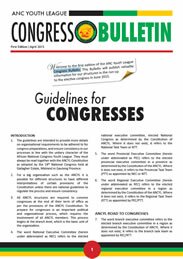Education Savings Account vs 529: Which College Fund Fits Your Family?
Choosing the right college fund can shape your child’s educational future and your financial well-being. You’re likely weighing the benefits of Education Savings Accounts and 529 plans, both popular options with distinct rules and advantages. Understanding where your money grows best, what tax breaks you can claim, and how each plan fits your family’s needs isn't simple. Before you pick a path, it's smart to see how these accounts stack up.
Understanding the Core Features of 529 Plans and ESAs
When evaluating education savings accounts, it is important to consider how 529 Plans and Coverdell ESAs compare in several key areas: contribution limits, investment flexibility, tax advantages, and eligibility requirements.
529 Plans allow families to contribute an unlimited amount towards qualifying education expenses, which encompass tuition, fees, books, and, in some cases, student loan repayments. Additionally, these plans often provide state-specific tax benefits, although these can vary by state.
The investment options available within 529 Plans are generally managed by state-sponsored programs, which may limit the range of investment choices but can provide robust options tailored to long-term education savings.
In contrast, Coverdell ESAs impose a lower annual contribution limit of $2,000 per beneficiary. Furthermore, contributions to Coverdell ESAs are subject to income limits based on federal tax filing status, specifically for married couples filing jointly.
However, one notable advantage of Coverdell ESAs is their broader investment choices; account holders can invest in a wide array of assets, including individual stocks and bonds. Additionally, funds in a Coverdell ESA can be used for qualified elementary and secondary education expenses, thereby enhancing its utility for younger students.
In summary, while both accounts serve the purpose of facilitating education savings, they offer distinct advantages and limitations that should be carefully considered based on individual financial situations and educational goals.
Key Similarities Between 529 Plans and ESAs
529 plans and Coverdell Education Savings Accounts (ESAs) exhibit fundamental similarities despite their distinct regulatory frameworks and eligibility requirements. Both account types allow contributions made with after-tax dollars, akin to the process of funding a Roth IRA. Importantly, the investments in these accounts can grow tax-free, provided the funds are utilized for qualifying educational expenses, which include both post-secondary tuition and certain elementary and secondary education costs.
Additionally, one notable feature common to both 529 plans and ESAs is the ability to change the beneficiary. This allows for flexibility in family financial planning, as funds can be reassigned to another qualifying family member without incurring tax penalties or implications.
In terms of financial aid considerations, both 529 plans and ESAs generally have a more favorable impact on aid calculations compared to other investment vehicles such as stocks, bonds, or real estate. This may result in a more advantageous position for families seeking financial assistance for educational expenses, given that these accounts are specifically designed for education funding.
Overall, both options present viable means for families to prepare for and finance educational costs.
Major Differences to Consider
While both 529 plans and Coverdell Education Savings Accounts (ESAs) serve the purpose of facilitating tax-advantaged education savings, they exhibit distinct characteristics that may influence a family's choice between them.
Coverdell ESAs impose a contribution limit of $2,000 per beneficiary each year and allow a wider range of investment options, including stocks, bonds, and mutual funds. However, these accounts are subject to income restrictions; for those filing jointly, the ability to contribute phases out at higher income levels.
In contrast, 529 plans do not have annual contribution limits, making them more flexible for families wishing to save larger amounts. Additionally, they are available to households at all income levels, though the investment options are generally limited to those offered by the specific state plan.
Both types of accounts require that funds be utilized for qualified educational expenses, which may include tuition, fees, and other related costs.
It is important to note that Coverdell ESAs must generally be fully distributed by the time the beneficiary reaches age 30. This rule can impact long-term planning and fund availability, making understanding the distinctions critical when choosing the appropriate education savings vehicle.
Reviewing Tax Benefits and Financial Aid Implications
When assessing options for saving for college, it is crucial to consider both the tax benefits and the implications for financial aid eligibility.
529 plans are notable for their tax-free growth and tax-free withdrawals for qualified educational expenses. Additionally, many states offer tax incentives or credits for contributions made to these plans. Notably, there are no income restrictions or annual contribution limits associated with 529 accounts, and account owners have the flexibility to change the beneficiary to another member of the family when necessary.
On the other hand, Coverdell Education Savings Accounts (ESAs) allow for tax-free withdrawals not only for college expenses but also for eligible elementary and secondary school costs. However, these accounts are constrained by an annual contribution limit of $2,000 and impose income restrictions for contributors who are married and filing jointly.
It's important to consider how these savings vehicles affect financial aid eligibility. Generally, parent-owned accounts, such as 529 plans, have a lesser impact on financial aid eligibility compared to student-owned accounts. This distinction can influence decisions regarding the ownership and management of educational savings.
In summary, both 529 plans and Coverdell ESAs have distinct advantages and considerations that should be carefully evaluated in the context of one's financial situation and educational funding goals.
Factors to Help Choose the Right Account for Your Family
When selecting a college savings account that best suits your family's financial situation, it is essential to consider various factors, including your savings objectives, income level, and the educational expenses you plan to cover. Two primary options are the 529 Plan and the Coverdell Education Savings Account (ESA), each with distinct characteristics that may influence your decision.
The 529 Plan generally offers higher contribution limits than the Coverdell ESA, making it a preferable option for families looking to save substantial amounts annually. Additionally, contributions to a 529 Plan may qualify for state tax benefits, depending on the regulations of your state, as well as potential federal tax advantages.
Conversely, the Coverdell ESA allows for a broader range of investment choices, including stocks and bonds, which may appeal to families seeking more control over their investment strategies. Furthermore, the funds from a Coverdell ESA can be used for qualified expenses associated with private K-12 education, in addition to higher education, providing flexibility in how educational expenses can be funded.
Individuals considering these options should also be mindful of income restrictions associated with the Coverdell ESA, which may limit eligibility based on your family's financial situation.
Careful evaluation of these factors can help determine the most suitable account based on your family's needs and financial goals.
Comparing Additional College Savings Alternatives
In addition to 529 Plans and Coverdell Education Savings Accounts (ESAs), there are various alternative options for establishing a college fund that may align with individual financial objectives.
University Gift and Minimum Trust Accounts (UGMA) and Uniform Transfers to Minors Act (UTMA) accounts allow for personal control over assets. However, it is important to note that these accounts do not offer tax advantages, and taxes will be incurred on any earnings as they accrue.
Roth Individual Retirement Accounts (IRAs) can also serve as a funding source for education, as they allow for tax-free withdrawals under certain conditions. Nonetheless, while they can offset student loan burdens, their primary function is to provide for retirement savings, and funds utilized for education purposes may reduce the retirement benefits.
General investment accounts provide the flexibility to invest in a range of financial instruments, such as stocks, bonds, or real estate investment trusts (REITs). However, they do not offer the same tax benefits associated with qualified tuition programs.
Each of these options carries distinct advantages, annual contribution limits, and implications for financial aid eligibility. When evaluating these alternatives, it is essential to consider factors such as potential rate of return, taxation on earnings, and the stipulation that funds be used for qualified educational expenses.
Proper analysis of these elements can help in selecting the most suitable strategy for college savings.
Conclusion
When deciding between an Education Savings Account and a 529 plan, weigh your family’s educational goals, preferred flexibility, and the potential impact on financial aid. Both accounts offer tax advantages, but they each have unique rules and limitations. Review your state’s options and consider future needs—whether K-12 or higher education. By knowing your priorities and understanding each plan’s features, you’ll be better positioned to choose the savings strategy that best fits your family’s path.

 Documents
Documents











